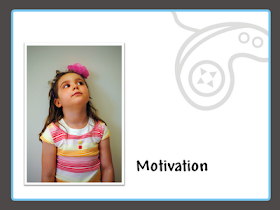The first order of business is to differentiate between educational games and edutainment. As described in Educational Video Game Design: A Review of the Literature, the difference is simply that edutainment is all about "skill and drill," while educational games "require strategizing, hypothesis testing, or problem-solving, usually with higher order thinking rather than rote memorization or simple comprehension."
I think that edutainment has earned a bit of a reputation for being not that fun, since many end up being flash cards shoved into a game. On the other hand, the higher order thinking educational games strive for isn't easy to design, and I'm not sure how many great examples of it there are. Certainly some subject areas, like history, seem easier to convey in these types of games. I'd like to push other areas like computer science to fit well, too.
One of the reasons that games are used in learning is motivation. If students aren't terribly motivated to fill in their times table charts multiple times, then attach a game to the task! But what really motivates? Is it really that simple?
In the same literature review, it is stated that motivation comes from two main places: narrative context, and goals and rewards (both intrinsic and extrinsic). With motivation comes a better ability to remember things.
Photo: narrative - location by jonathanb1989
Story helps integrate what is known with what is plausible. It helps give context (think situated learning, at least in terms of how James Paul Gee sees it). And, most of all, it motivates.
Goals and rules also motivate, as we said earlier, and they are not less important than narrative necessarily. But they should be well integrated into the story. An interplay of short, medium, and long term goals should be used throughout the game to draw players into the story line.
Photos: Google Search and Destroy by Andrew-Hyde, detective by olarte.ollie, Abstract by Miguel Ramirez
I already talked about learning outcomes in the previous post, so I'll just point out again the importance of 21st Century Skills. I see it all the time with fresh new undergrads: they don't know how to Google! And these are computer science students. We need to train students how to find information online, how to determine its reliability, and what to do with it. That's just one example of the "skills, knowledge and expertise students should master to succeed in work and life in the 21st century."
This last slide comes from another book I've mentioned a few times on this blog, Ecology of Games: Connecting Youth, Games, and Learning. In the first chapter, James Paul Gee gives five conditions an experience needs to be useful for learning. I like to use these as a bit of a checklist when I'm thinking about whether a game experience I've designed is going to be effective. Here are a few details about each condition, quoted from the book:
- specific goals: “Humans store their experiences best in terms of goals, and how these goals did or did not work out”
- interpretation: “thinking - in action and after action - about how our goals relate to our reasoning in the situation” and “extracting lessons learned and anticipating when and where those lessons might be useful”
- immediate feedback: “recognize and assess their errors and see where their expectations have failed” and “explain their errors and why their expectations failed”
- application of previous experience: “so they can “debug” and improve their interpretations of these experiences, gradually generalizing them beyond specific contexts”
- learning from peers and experts: “Social interaction, discussion, and sharing with peers, as well as mentoring from others who are more advanced, are important”







Gail: Here are a number of controlled studies accomplished with young children who have autism. The research demonstrates how computer aided instruction, animation, video modeling and educational rewards motivated children to learn.
ReplyDeletehttp://web.teachtown.com/research/studies
Excellent Blog!
Thanks for the link! Interestingly, I do see a lot of titles with "autism" in them when I search the literature for educational games. Definitely seems like a topic of interest, and one with potential to help!
ReplyDelete